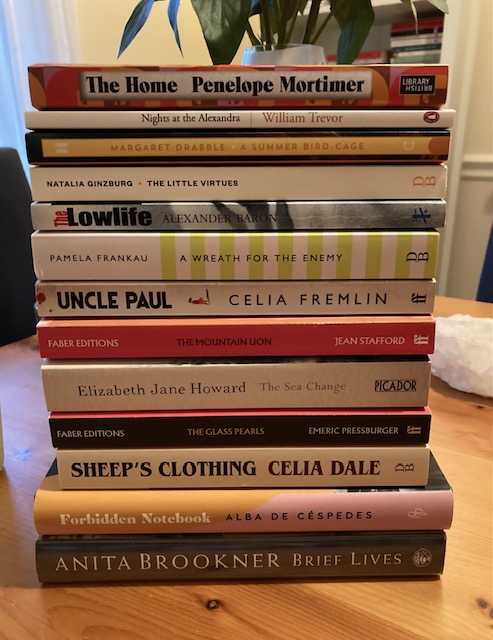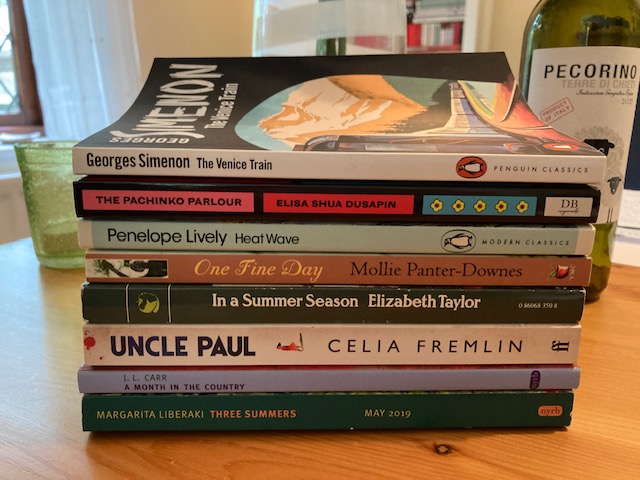The black American writer Diane Oliver had a promising career ahead of her when she died in a motorcycle accident in 1966 at the age of twenty-two. A graduate student at the University of Iowa Writer’s Workshop, Oliver had published four short stories during her lifetime, with another two following posthumously. These six stories and eight previously unpublished pieces make up Neighbors and Other Stories, a remarkably striking collection recently issued as part of the uber-reliable Faber Editions series.
Born and raised in Charlotte, North Carolina, Diane Oliver was writing at a time when racial segregation in America was being challenged through the civil rights movement, but longstanding prejudices remained entrenched. Much of her work portrays life for black women – frequently young black women – in 1960s America, complete with the abuse and microaggressions that characterised these people’s days. Nevertheless, despite the undeniably powerful nature of these themes, Oliver’s fiction is subtle, taking in a range of experiences that feel authentic and true. Here we see racial discrimination, both explicit and less overt, social exclusion, abandonment, exoticisation, activism, interracial relationships and much, much more, giving a rich insight into black lives in this crucial period of history.
Several stories depict the fear and anxiety present within the black community at the time. In the titular piece – one of my favourites in the collection – Oliver portrays a family’s conflicted emotions the night before the youngest son is due to start at a new school. But what makes this situation so unusual is that Tommy will be the first black child to attend a previously all-white facility. Unsurprisingly, opinions within the community are divided, with strong views being expressed on both sides. In fact, the family has already received threatening letters and abuse, and as the night unfolds, their home comes under attack.
No one heard her speak, and no one came over to see if they could help; she knew why and did not really blame them. They were afraid their house could be next. (p. 20)
Central to the story is the family’s moral dilemma. Should they send young Tommy to the newly integrated school, knowing that he will be bullied and ostracised for months, or do they relent and put his emotional well-being first? Someone must be the first for progress to be made, but does it have to be Tommy?
This theme is developed further in The Closet on the Top Floor, when Winifred – who is fed up of being ‘the Experiment’ – is sent by her civil rights activist father to a prestigious girls’ college where all the other pupils are white. Oliver is adept at illustrating the different forms of racial prejudice at play here, from social exclusion (in the first passage below) to more explicit slurs (in the second). For clarification, Norma is Winifred’s roommate, while Ellen is Norma’s friend.
Everybody was in a sorority but Winifred. She didn’t mind. Somehow she had become used to not being invited and when she received an invitation to a sorority tea—by mistake, of course—she very casually threw the envelope into the wastepaper basket. (p. 31)
“Norma?” Ellen asked, her voice sounded puzzled. “Do you think all of them are like this, or just her?”
“I don’t know,” Norma answered. “Our maid takes food, but she never really tries to hide anything.” (p. 36)
As the weeks pass, Winifred withdraws from college society, hibernating in her room and stockpiling food before Norma moves out. This sad, unsettling story highlights the devastating impact of racism – both casual and more deliberate – on a young woman’s mental health.
The detrimental effect on health – both physical and mental – is a recurring theme in several of these stories, perhaps most overtly in Health Service, where an impoverished woman, Libby, and her four children must walk for hours to see a doctor. White authority figures, such as nurses, managers, employers and police officers, are particularly aggressive in their treatment of black women, as illustrated in the following scene. In short, the clinic nurse shows no appreciation of Libby’s personal circumstances and the challenges of caring for young kids.
“Your kid’s in here raising sand,” the nurse said. “We ask you people not to deposit your children in the waiting room. When only one’s sick, why don’t you leave the rest at home?” (p. 71)
After a tiring journey and a long, frustrating wait (the children are tired and fidgety), Libby is told to come back another day as the doctors will be finishing early. But Libby will be working the rest of the week, and with no husband on the scene, it’ll be hard for her to return.
These heavy-handed authoritarian attitudes also come into play in Before Twilight, when Jenny and her three friends enter a whites-only tea room determined to be served. It’s one of several stories where Oliver subtly drops hints about her characters’ backstories, fleshing out the broader context in coolly nuanced ways.
Jenny looked down at her mother’s hands, seeing the knuckles swollen in the middle of each finger. She knew what she was thinking about. The father of one of her friends had found the charred body last spring. Since then she guessed everybody had just stopped talking about voting. (p. 43)
Jenny’s mother doesn’t want her girl getting mixed up in any trouble, fearful of what might happen, but Jenny is swayed by her friend Hank, a civil rights activist intent on making a stand. A thoroughly unsettling story laced with a sense of dread.
When the Apples are Ripe also features a character eager to take an active role in the civil rights movement, dividing opinion within his family. In contrast to some of these other pieces here, this is a hopeful, touching story with an unexpected ending.
In Mint Juleps Not Served Here, Oliver shows us just how far one family, the Macks, will go to protect their child from bullying and racial abuse.
The town with all of the pale faces that ruined her baby frightened and angered her. But she and Mr Mack knew better than to become angry in their town. (p. 79)
However, their off-the-grid existence in the depths of a large forest is threatened when an inquisitive young social worker comes looking for their house. This darkly unnerving story has the power to shock…
“No Brown Sugar in Anybody’s Milk” is a fascinating story that starts in familiar territory – a black maid being bossed about by her privileged white employer – only to end up somewhere different with a rug-pull at the end.
I’d also like to mention four stories as important illustrations of Oliver’s breadth. In Banago Kalt, three American friends from college, Millie, Rita and Karen, stay with a Swiss family for the summer as part of an educational trip. While Rita and Karen (both white) are warmly welcomed, it is Millie (black) who generates the most curiosity amongst the locals. Everyone wants a piece of Millie, and she is exoticised wherever she goes. While all this attention is well-intentioned, it doesn’t always feel that way for Millie, who often finds it funny and unnerving. There are shades of Nella Larsen’s excellent novella 1928 Quicksand here, highlighting the damaging fetishisation of black culture and individuals – an issue that remains in some segments of society today.
In The Visitor, Oliver focuses on the tensions between Alice, a well-to-do stepmother of high social standing, and her disdainful stepdaughter, Katie, when the latter comes to stay. This excellent story explores class conflicts, differences in aspirations, and the damaging effects of making assumptions about someone based on one’s own views.
Alice thought she detected a slight smirk on her face. The child was unnerving, she reminded her of a wizened old lady in a child’s body. (p. 118)
Spiders Cry Without Tears – one of the standout pieces here – explores an interracial relationship from a white woman’s perspective. When Meg, a divorced white woman with a teenage son, starts seeing a black doctor named Walt, she finds herself excluded from social events, even when she tries to keep the relationship under wraps. This beautifully developed story is far more layered than this brief description suggests.
While short story collections can often be mixed, all of Oliver’s stories hits their marks for me, which is quite a feat. Even the experimental Frozen Voices – a startling tale of the messy, entangled lives of four young friends – is wonderfully raw and evocative. It’s a dazzling example of Oliver’s potential as a writer.
Come on, Jenny, wanna dance? Soft as April rain, smooth as a quiet mountain lake, as mysterious as an ocean, as dangerous as white water in deep rivers, she drops from a white cloud and falls to a green, a raindrop on a leaf. Dark, bloody drops of beer and wafer chips of flesh, a communion of human love. (p. 218)
So, to summarise then, these excellent stories skilfully portray various aspects of life for the black community in 1960s America, just as the Civil Rights movement was gaining momentum. There is a richness of experience here, taking in a wide range of scenarios and moral questions, many of which remain relevant today. Oliver’s style – strong on the grinding horrors and microaggressions of daily life – has drawn comparisons with Shirley Jackson, Nella Larsen and Toni Morrison, highlighting her literary promise and skills. It’s always tragic when a talented writer dies young, but it seems especially cruel in this instance. Bravo to Faber for publishing this terrific collection, which I strongly urge you to read.
(My thanks to the publisher and the Independent Alliance for kindly providing a review copy.)










